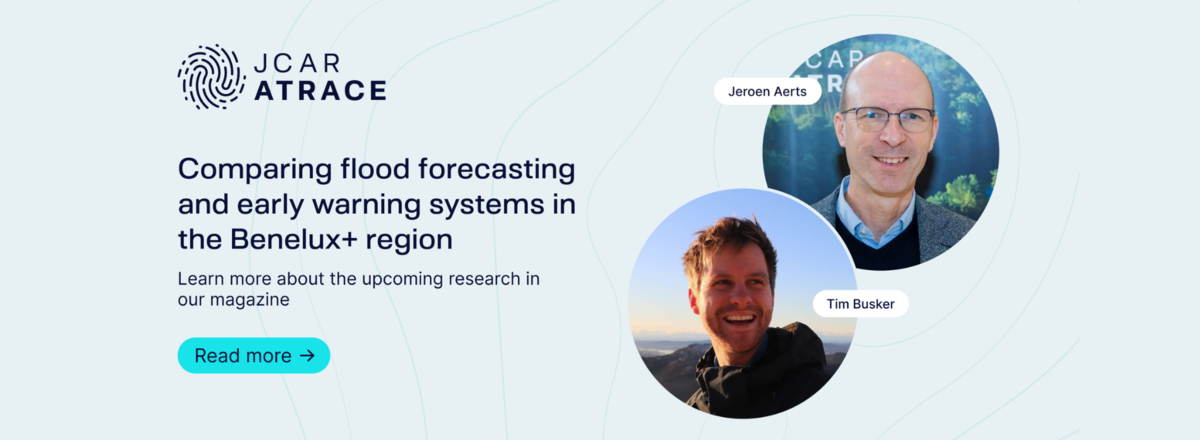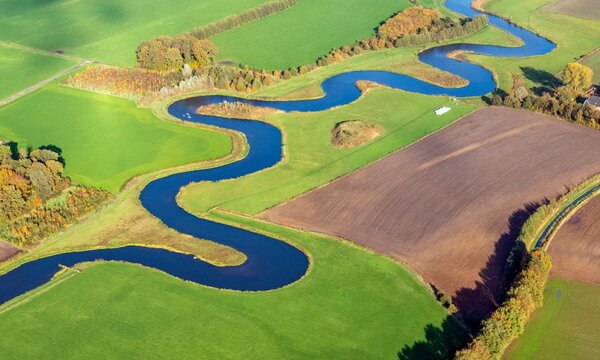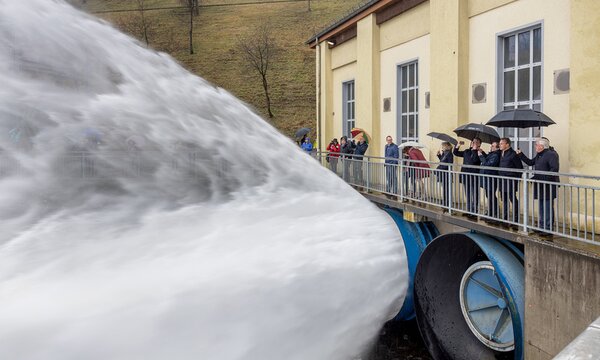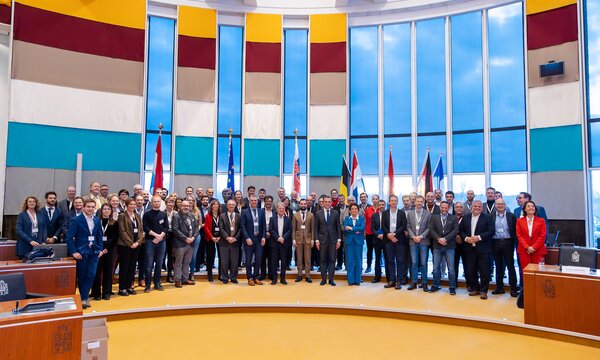We spoke to Tim Busker and Jeroen Aerts from the Institute for Environmental Studies (IVM) in VU Amsterdam about their upcoming research carried out in the scope of our programme.
Hi Tim & Jeroen, thank you for taking the time to speak to us. Could you tell the readers a bit about your work and the role of your institute?
Tim: Of course. I am a Postdoctoral Researcher focused on early-warning systems and anticipatory action for floods and droughts. Within the JCAR ATRACE programme, I lead the comparative study on Flood Forecasting and Early Warning Systems (FFEWSs) in the Benelux + region.
At the Institute for Environmental Studies (IVM), we model floods and the effect of adaptation options, such as nature-based solutions like retention ponds and reforestation and forecast-based actions such as placing flood barriers. My work involves forecasting floods and simulating processes using computer models, enhancing our ability to issue timely warnings and improve response strategies.
IVM is an interdisciplinary institute, integrating insights from climate, hydrology, individual behaviour, and policy. Our aim is to bridge the gap between natural processes and societal impacts, ultimately fostering better preparedness and interventions against floods and droughts.
Jeroen: I am a professor specialising in water and climate risk, my focus is particularly on extreme weather events, such as flooding. My research not only involves quantifying the risks associated with flooding but also exploring effective strategies to mitigate these risks. One crucial aspect of flood risk management is the implementation of early warning systems. Here in the Netherlands, for instance, we have infrastructures in place, such as dams and pumping stations, but there are numerous additional measures that can be taken to enhance flood resilience. Early warning is a vital component of this strategy.
Let's discuss your manuscript. Could you summarise it for us in a couple of sentences?
Tim: We did a comparative study of early warning systems for flooding across the Benelux countries and Germany’s federal states of North Rhine-Westphalia and Rhineland-Palatinate. While much existing research tends to concentrate on forecasting, our study takes an innovative approach by examining the entire warning-response chain. We aim to understand how early warnings translate into effective actions and identify the gaps that exist in this process. To gather insights, we conducted interviews with forecasters and crisis responders to assess the operational effectiveness of these systems across the different countries.
Jeroen: A recommendation that emerged is the need for warnings to go beyond just indicating rainfall or water levels. Experts suggest incorporating information regarding potential damage and expected impacts from forecasted floods. For instance, predicting a water level of three meters may not convey enough context. Are three meters concerning? Are four meters considerably worse?
A recommendation that emerged is the need for warnings to go beyond just indicating rainfall or water levels.
Tim: Exactly. Crisis responders need specific insights, such as whether their fire station will be affected and if they can still access areas for emergencies. A two-meter water level poses different risks than three meters; if sandbags are only placed up to two meters, they will be useless at three.
Additionally, responders want insight into which hospitals and roads will likely be flooded. Information on the expected impacts of rising water levels is essential for their planning. Currently, Flanders has made strides in forecasting flood extent and depth, but clear thresholds for issuing warnings are still lacking. Overall, moving towards impact-based forecasting is vital. Crisis managers emphasise that this type of information is critical for their operations. However, forecast specialists highlight the challenges in providing such detailed insights.
You conducted this research within the JCAR ATRACE programme. How do you think this type of research fits into the programme? Did you encounter any advantages being part of this community?
Tim: I believe the JCAR ATRACE programme stands out due to its unique transboundary bottom-up approach, which distinguishes it from typical EU projects. The project’s is defined by stakeholders in countries sharing river systems: policy makers and researchers have jointly defined research questions that serve policy. Strong outreach efforts helped me significantly; people often recognised JCAR ATRACE, making it easier to secure interviews. I had no trouble engaging with over ten organisations willing to discuss their work, largely thanks to JCAR's extensive network across numerous countries. Our collaboration as a large group of authors also facilitated support and contributions across the board.
Jeroen: Cross-border cooperation is crucial, especially for smaller river systems, as information sharing during crises like extreme rainfall is vital. JCAR plays a key role by providing a platform for building long-lasting relationships and networks that promote collaboration. This initiative is unique in its capacity to foster necessary connections, and I have seen great enthusiasm from both sides of the border, highlighting the importance of shared data. Moreover, the combination of long-term, in-depth research with shorter studies has proven effective for obtaining quick results.
Interested in the rest of the interview? Read the full interview in our magazine.



